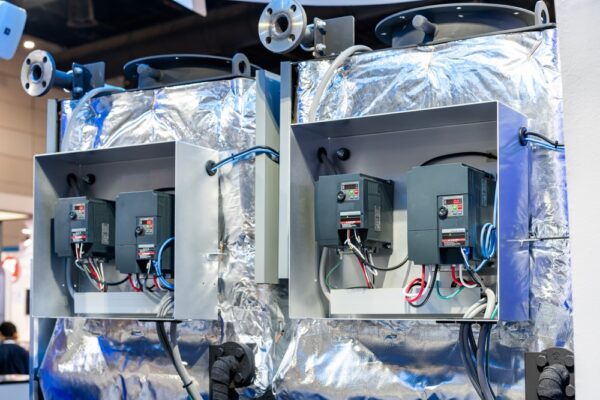Thermal Management for AC Drive Reliability

As they operate, industrial AC drives generate significant heat from various sources, including power semiconductor switching losses, copper losses in windings, and iron losses in magnetic components. If not properly managed, this heat can wreak havoc on the drive’s components. To avoid overheating, component degradation, and safety hazards, it’s important to prioritize good thermal management.
The cost of poor thermal management
The consequences of inadequate thermal management in AC drives can be severe and far-reaching. First and foremost, overheating is linked to a significant reduction in efficiency and performance. As components heat up, their electrical properties change, resulting in increased power losses and decreased accuracy in motor control. This also leads to higher energy consumption, driving up operational costs.
Sustained high temperatures also wear down drive components quicker. Capacitors are vulnerable to heat-induced degradation, which can halve their lifespan for every 10°C increase above their rated temperature. But perhaps the most critical consequence of poor thermal management is the increased risk of catastrophic failure and unplanned downtime. When temperatures exceed safe operating limits, components can fail suddenly, bringing production to an abrupt halt.
Key factors in AC drive thermal management
Effective thermal management starts with understanding conduction, convection, and radiation — each of which can significantly reduce heat damage and enhance drive reliability:
- Ambient temperature considerations: Evaluate the operating environment’s temperature range, accounting for seasonal variations and localized heat sources. In some cases, implementing climate control measures may be necessary.
- Heat dissipation methods: Utilizing heat sinks and thermal compounds for conductive cooling can effectively draw heat away from sensitive components. Convection cooling also helps dissipate heat into the surrounding air.
- Proper ventilation and airflow: Adequate ventilation — including unobstructed air intake and exhaust paths — can enhance air circulation, promoting more efficient heat dissipation while maintaining consistent temperatures throughout the drive system.

Thermal management best practices
With ambient temperatures, heat dissipation, and ventilated airflows in mind, here are a few simple tips you can put into action as part of a thermal management plan for AC drives:
- Passive cooling techniques: Using heat spreaders and thermal pads helps distribute heat evenly across components, preventing hot spots. Phase-change materials can be implemented for temporary heat absorption during peak loads.
- Active cooling solutions: Temperature-controlled fans can be installed for forced-air cooling, adapting to changing heat loads. Thermoelectric coolers offer precise temperature control for sensitive components.
- Advanced thermal management: Heat pipes can be implemented for efficient heat transfer over longer distances within the drive. For extreme heat loads, two-phase cooling systems might be explored to maximize cooling efficiency.
- Regular maintenance and cleaning: Routine cleaning of heat sinks and air filters prevents the buildup of insulating dust layers. Periodic inspection and replacement of thermal compounds also ensure optimal heat transfer.
- Monitoring and diagnostics: IIoT temperature sensors allow for real-time monitoring of critical points within the drive. Predictive maintenance algorithms can anticipate thermal issues before they lead to failures.
- Proper installation and spacing: Following manufacturer guidelines for mounting and orientation optimizes the designed cooling pathways. Consideration of adjacent equipment’s impact on thermal performance helps with temperature control.
OCTOBER SPECIAL: DRIVE COSTS DOWN
Through October, GES is offering a special on AC drive repair: All month long, you can get 10% off any single drive repair or 15% off three or more repairs!
Keep cool and drive on.
In the heat of industrial operations, a cool-running AC drive is the key to long-term equipment reliability. Good thermal management is the product of mindful maintenance. Prioritizing temperature control principles and proactive best practices will keep excessive heat at bay — and allow your AC drives to operate at peak efficiency.
